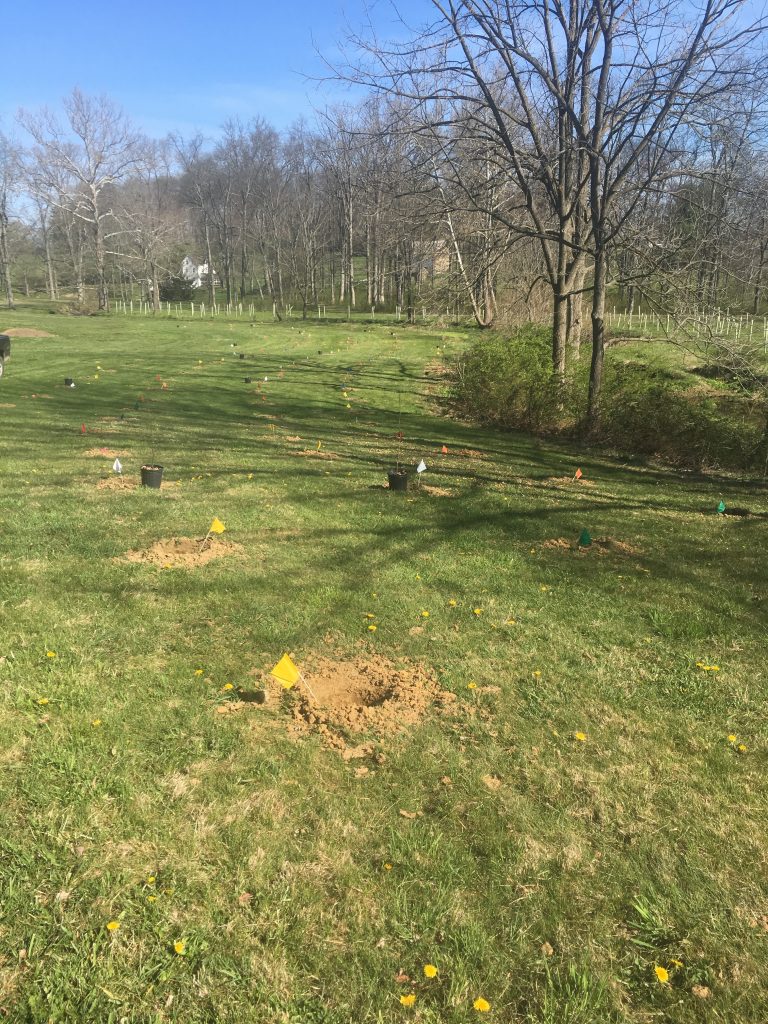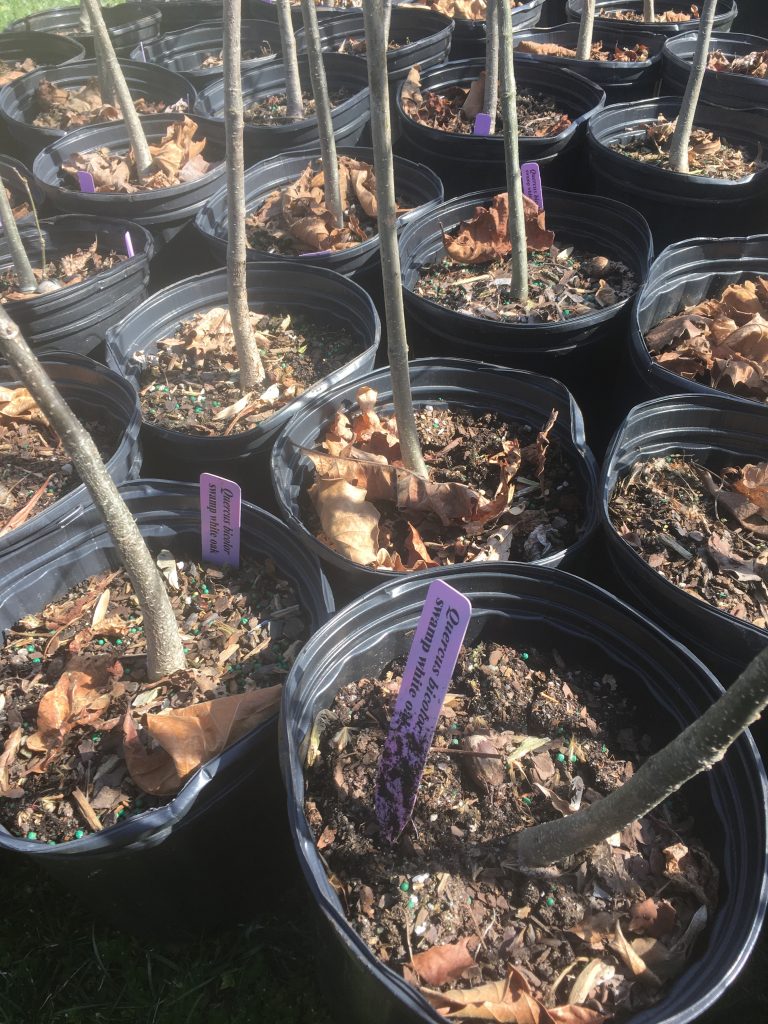This is the first in a series of 3 blog posts to help you plant native trees and shrubs in a riparian buffer (the land that borders streams and other waterways). While we will focus on planting in a riparian buffer, most of the tips provided in these posts also apply to planting trees or shrubs in other locations on your property. Read our post on why these riparian buffers are so important.
First, choose a location along your stream where a riparian buffer area is lacking or could be enhanced and measure the square footage of the area you intend to plant. If your project involves planting where no buffer exists, measure outward from where the bank drops off to the stream, and while there is no specific ideal buffer width, the wider the buffer area, the greater the environmental benefits. We suggest a minimum of a 25’ buffer width.

Example of a riparian buffer area prepared for planting. The grass was mowed prior to marking the plant locations and digging the holes. 
Work with a reputable native plant nursery or a landscape professional to help select your plants and determine the quantity needed.
Once you know the size of the area you will be planting, you can work with a landscape professional or reputable nursery that specializes in native plants to estimate how many trees and shrubs should be ordered. Typically, plants are spaced 12-15 feet apart.
Prior to planting, you should prepare the project area by mowing it to facilitate digging the holes.
To get an up-close look at a riparian buffer area and gain some practical planting experience, join us for a one or more of our native tree planting days – May 29, 30 & 31 – at Ashbridge Preserve. More information and volunteer sign up for these upcoming plantings available soon!

